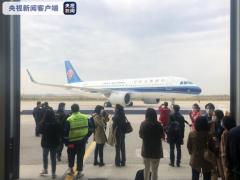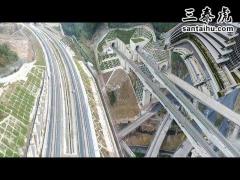中国科技大跃进 [美国媒体]
今年1月,中国科研人员宣布他们已经使用成功使用量子力学规则,通过卫星安全地将加密数据发送至奥地利的维也纳 ,,荷兰代尔夫特理工大学量子物理学家罗纳德汉森将描绘为量子网络潜力的极佳示范和“未来量子网络的一个里程碑”。
Part II
The quantum internet
量子网络
In January, Chinese researchers announced that they had sent data securely encrypted using the rules of quantum mechanics via satellite to Vienna in Austria – a demonstration of the potential of a “quantum internet” that Dutch quantum physicist Ronald Hanson of the Technical University of Delft describes to me as “a milestone towards future quantum networks”.
今年1月,中国科研人员宣布他们已经使用成功使用量子力学规则,通过卫星安全地将加密数据发送至奥地利的维也纳 ,,荷兰代尔夫特理工大学量子物理学家罗纳德汉森将描绘为量子网络潜力的极佳示范和“未来量子网络的一个里程碑”。
Quantum information technologies harness the counterintuitive principles of quantum physics to do things with information that are impossible with the 1s and 0s of binary code in today’s devices. Quantum computers can, for some tasks, operate faster and with more computational resources than ordinary computers, while a quantum telecommunications network – the quantum internet – could employ data-encryption methods that are rendered tamper-proof by the fundamental quantum laws of nature. The principles of so-called quantum cryptography were worked out in the 1980s, but applying them to information encoded in light signals for long-distance transmission is an immense technical challenge.
量子信息技术利了用量子物理的反直觉的原理, 来处理当今设备中二进制代码1和0所不能处理的信息。 对于某些任务,相比普通电脑,量子计算机计算速度更快,计算资源更多。量子电讯网络或量子互联网,因为量子的基本自然法则,可以用来传输加密数据,不须担心篡改。量子加密学理论诞生于1980年代,但将它们应用于用光信号编码,来进行长距离信息传输是一项巨大的技术挑战。
China’s approach here again exemplifies its can-do mentality. The government has begun to install a fibre-optic network for quantum telecommunication stretching from Shanghai to Beijing. But for longer-distance transmission optical fibres are no good because the light signal eventually gets too dim as it passes along the fibre.Instead signals must be through the air, using lasers to connect orbiting satellites with ground stations. In 2016 China initiated an international project called Quantum Experiments at Space Scale (Quess) and launched a satellite designed for quantum data handling, called Micius after the romanised name of the ancient Chinese philosopher Mozi.
中国在这里的做法再次体现了其乐观进取的心态。 政府已经开始安装京沪的量子光纤通信线路。 但是对于长距离传输来说,光纤并非好材料,光信号在通过光纤时衰减很快。相反,信号必须从空气中传输,使用激光将卫星与地面站连接起来。 2016年,中国启动了一项名为量子实验的国际项目(Quess),名为空间量子(Quess),并发射了一颗专为处理量子数据而设计的卫星,名为Micius,以中国古代哲学家墨子的罗马化名称命名。
The satellite work is being led by Jian-Wei Pan, who studied for his PhD in Vienna under Anton Zeilinger, one of the foremost scientists in the field of quantum information science. With that pedigree, Pan could have had his pick of jobs in the field, but in 2001 he chose to return to China. In 2009 he oversaw the task of constructing a “quantum communication hotline” for the military parade on the 60th anniversary of the Chinese communist state, and in 2012 he won the prestigious biennial International Quantum Communication award.
这个卫星工作由潘建伟领导,他读博时师从维也纳安东?齐林格(Anton Zeilinger),纳安东是量子信息科学领域最重要的科学家之一。 因其关系,潘得以在此领域有事有做。但在2001年他选择回国, 2009年,他负责为庆祝成立60周年的阅兵式建立“量子通讯热线”,2012然后,他获得了两年举行一次的,着名的国际量子通讯奖
Pan’s success in getting this technology up and running feels almost inexorable. Last year his team in Hefei drew more hyperventilating headlines by demonstrating the first “teleportation” of quantum objects (photons or “particles” of light) from the ground-based observatory at Ngari in Tibet to Micius, up to 1,400km away. The feat is not quite as science-fictional as it sounds – quantum teleportation, unlike the Star Trek version, does not involve any transmission of matter – but it could be an important trick for quantum telecommunications. The team also reported transmission of the “key” used for quantum encryption of signals between ground stations in China and Micius.
潘让这项技术运转起来的成功似乎不可阻挡。 去年,他的合肥团队完成了从西藏阿里地基天文台到空中1400千米高的墨子号的量子物体远程传送(光子或光质子),成为更轰动的全球头条。此举不像听起来那么科幻,它没有像星球大战一样,不能传送物质,但它是量子通信的一个重要窍门。该团队同时还报告了用于地基站与卫星之间量子加密信号的“密钥”的传输
The latest advance was to get such keys all the way from Beijing to Vienna. This meant sending a laser signal with the quantum information from the Xinglong observatory near Beijing to Micius as it passed over China, and then having Micius communicate another such message with a station in Graz as it traversed the night sky over Austria. The link-up between Xinglong and Beijing, and between Graz and Vienna, was made along local fibre-optic networks. In this way, a video conference held between the Chinese Academy of Sciences in Beijing and the Austrian Academy of Sciences (of which Zeilinger is president) in Vienna was conducted with the robust security of quantum encryption – a striking harbinger of what a quantum internet might provide.
最新的进展是从北京到维也纳一直能获得这样的“密钥”。这意味着可以从北京附近兴隆天文台将带量子信息的激光信息发到墨子号,墨子号再转发到格拉茨的一个基站。从北京到兴隆,从格拉茨维也纳也可以使用光纤网络。这样,在北京的中科院与奥地利科学院(其中Zeilinger是院长),可以通过量子加密的强安全进行视频会议,这是量子网络潜能的惊人开始.
Pan says that the key to the remarkable success of Quess so far is coordination and collaboration within the immense pool of talent that China possesses. “When researchers [in different disciplines] undertake joint research, they can truly innovate,”, he says.
潘说,迄今为止Quess取得的显着成功的关键,是能在中国拥有的庞大人才库中进行协调与合作。 “当不同领域的研究人员进行联合研究时,他们可以真正进行创新。”他说
Acquiring skills abroad is still important for Chinese researchers, says Pan, and will be for some time. But increasingly it’s working the other way around too. “In my laboratory there are quite a few foreign students from developed countries, and some of them are even learning Chinese”, he says.
潘说,在海外获得技能对于中国研究人员来说依然很重要,并且会持续一段时间。但逐渐地,也有海外人员来到中国。 “在我的实验室里,有不少来自发达国家的外国学生,他们中的一些甚至还在学习中文。”他说
Space
太空
In China no goal seems too big – not even the sky is the limit. In June the Chinese space agency plans to launch a lunar space mission to deliver a satellite that will guide a rocket in 2019 to the far (“dark”) side of the moon, bearing a robotic lander vehicle. The satellite link is essential for relaying data from the rover back to Earth. It’s all part of a campaign aiming at a manned moon mission in the 2030s.China is already regarded as a serious contender with the US, Europe and Russia for predominance in space, although so far it has shown enthusiasm for collaborating with Europe.
在中国,似乎任何目标对他们来说都不大 - 即使天空也不是极限。中国太空总署计划在今年6月开启月球太空任务-发射一颗卫星用于引导2019年在月球背面深处登月的火箭,该火箭载有着陆机器车。卫星链路对于将漫游者的数据传回地球至关重要。这是2030年代载人月球目标的一部分。 中国已经被认为是同美国,欧洲和俄罗斯争夺太空优势的重要竞争者,尽管到目前它表现出了与欧洲合作的热情。
It has launched two prototype unmanned space stations in its Tiangong programme, a prelude to Tiangong-3, which, if launched in the early 2020s, will support a crew of three – potentially including astronauts from other UN member nations. China has even discussed building a moon base with the European Space Agency.
他们在天宫计划中已经发射了两个无人空间站,这是计划在2020年初发射天宫3号的序曲,天宫3号搭乘三名宇航员 - 可能包括联合国其他成员国的宇航员。 中国甚至与欧洲航天局讨论了建造月球基地的可行性。
Despite this apparently collaborative spirit, China’s space ambitions evoke the pioneering maritime voyages of Zheng He in the 15th century, which some historians today regard as a way of asserting the “soft power” and heavenly rule of the Ming emperor. Nothing like Zheng He’s “treasure ships” had ever been seen on the oceans before: they dwarfed the vessels in which Europeans like Vasco da Gama explored the world. Many are now wondering whether, in science and technology, those times are returning
尽管有这种明显的合作精神,中国的太空野心仍让人想起15世纪郑和的开创性海上航行,今天的一些历史学家认为这是一种宣扬大明王朝的“软实力”和天朝上国统治的方式。郑和的“宝船”之前从未在大海上见过:它使伽马这样的欧洲探索世界的船只形如侏儒,很多人现在在想,它是否会在在科技领域时代回归。
版权声明
我们致力于传递世界各地老百姓最真实、最直接、最详尽的对中国的看法
【版权与免责声明】如发现内容存在版权问题,烦请提供相关信息发邮件,
我们将及时沟通与处理。本站内容除非来源注明五毛网,否则均为网友转载,涉及言论、版权与本站无关。
本文仅代表作者观点,不代表本站立场。
本文来自网络,如有侵权及时联系本网站。
图文文章RECOMMEND
热门文章HOT NEWS
-
1
Why do most people who have a positive view of China have been to ...
- 2
- 3
- 4
- 5
- 6
- 7
- 8
- 9
- 10
推荐文章HOT NEWS
-
1
Why do most people who have a positive view of China have been to ...
- 2
- 3
- 4
- 5
- 6
- 7
- 8
- 9
- 10










